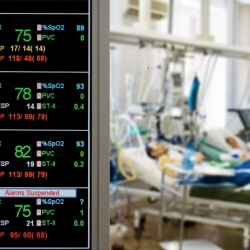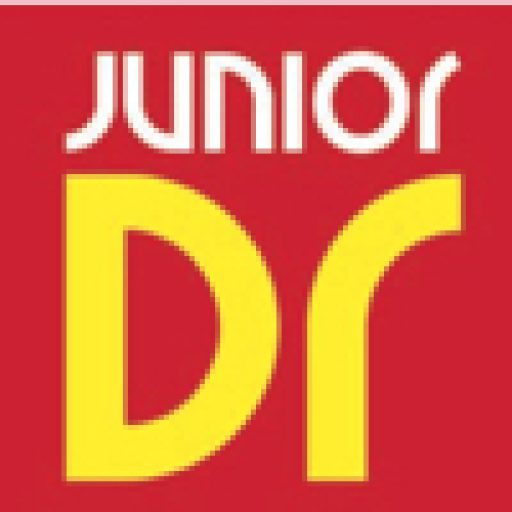 It is essential for senior trainees to demonstrate their abilities at leadership and management in order to obtain a Certificate of Completion of Training[1] and get shortlisted for a consultant job. Setting up a workshop would provide a perfect platform for me to demonstrate these qualities, to show my enthusiasm to teach and at the same time to improve patient’s safety.
It is essential for senior trainees to demonstrate their abilities at leadership and management in order to obtain a Certificate of Completion of Training[1] and get shortlisted for a consultant job. Setting up a workshop would provide a perfect platform for me to demonstrate these qualities, to show my enthusiasm to teach and at the same time to improve patient’s safety.
Choosing a topic
A good leader needs to be able to set a new direction, develop a vision of the future and identify strategies to achieve the necessary changes.
I started by researching what might be a suitable topic. In order for a workshop to be appealing, it needed to be different from what was already offered in the region. During my ST5 year, I completed an audit on the accuracy of the landmark approach versus ultrasound for central neuraxial blocks in both the general and obstetric populations. Our accuracy rate was only 45.4% irrespective of the grade of the anaesthetists performing the procedure[2], worryingly, this finding was considered much better than what was quoted in other literature[3],[4],[5] .
I first became competent and confident in using ultrasound to perform ultrasound of the back as a core trainee (CT2). Subsequently, I completed two 6-month advanced modules in Regional and Obstetric Anaesthesia as an specialty trainee (ST6). I truly felt this was a skill I could teach and inspire others to improve their accuracy rates and patient safety in central neuraxial blocks. The efficacy and safety of ultrasound for siting of epidural catheters was reviewed by the National Institute for Health and Clinical Excellence (NICE)[6] and British Medical Journal[7]. The potential for neurological complications was also highlighted by the National Audit Project (NAP3)[8].
A majority of regional anaesthesia courses running nationally cover the various peripheral nerve blocks with only a small amount of time specifically dedicated to the back. These courses tend to be expensive and together with the budget cuts in study leave, they are less appealing to obstetric and non-regional anaesthetists.
I, therefore, approached my college tutor and was encouraged to set up this course from scratch.
Organisation
I had attended many regional and national courses in the past, but I had never organised anything of this scale. I found this particularly daunting. Where should I start? There were so many things I needed to consider, such as a venue, sponsors, equipments, speakers, the format of workshop and publicising of workshop. This certainly gave me an opportunity to improve on my communication skills to engage with various parties and to convey my new idea across enthusiastically.
I first approached the Education Centre at Royal Albert Edward Infirmary, Wigan, United Kingdam (where I was working at the time). I was pleased that they would be happy to provide their Clinical Skills Lab and a few of their meeting rooms free of charge. The venue was exactly what I wanted. It was newly renovated with the latest information technology for presentations.
From my previous attendance in regional anaesthesia courses and national congresses, I had contact details for Sonosite and Pajunk. I approached them and introduced my idea of a new workshop. They found this idea extremely appealing and were happy to provide food and refreshment for the inaugural workshop. Sonosite was also happy to provide 5 ultrasound machines free of charge.
With venue, sponsors, food and equipment organised, I required speakers and demonstrators. I always believed one should never forget how and whom he/she obtained one’s initial competency and skills. Therefore, I immediately approached Dr Abraham Ssenoga who first taught me this skill and he was delighted to teach in the workshop. The other speaker would be Dr Ram Krishnamoorthy at Wigan, who routinely performed ultrasound on all his central neuraxial blocks. I was pleased that my level of enthusiasm had motivated and inspired them to come on board to the faculty for this completely new workshop.
My experience in gaining confidence in performing a new skill was to understand its indications and to practise it as many times as possible. I was determined that this must be the aim of the workshop – maximum hands-on experience to develop the confidence required to perform it without supervision. Hence the format of this workshop would be a lecture-based morning followed by 90 to 120 minutes of hands-on practice in groups of 3 to 4 only. The maximum number of the workshop would be limited to 15 candidates to maximise hands-on practice. This remained the hallmark for all my workshops. This small number would also allow me to do all the administrative work in my own time.
In order to encourage people to attend, this first workshop was free of charge and candidates were expected to scan each other’s backs during their hands-on practical sessions.
It was important to apply for RCoA CPD points to increase its appeal to various grades of anaesthetists for future revalidation and improved its national profile. This was applied online via http://www.rcoa.ac.uk/revalidation-and-cpd/applications-cpd-approval and with 1 educational hour represents 1 CPD point. This workshop was approved for 3 CPD points.
Finally, the part that concerned me the most: “Would people be interested in attending my workshop?”. I understood that publicity was the key, therefore by utilising my expertise in social media and my experience as the Communication Lead for both North West Research and Audit Group (NWRAG)[9] and Research and Federation of Trainees (RAFT)[10], I produced a poster, created an event on facebook, contacted all the anaesthetic secretaries at the various hospitals I previously worked at and the North Western Deanery Educational Administrator to publicise this workshop.
Fortunately, this workshop turned out to be very popular and was fully booked within hours with a waiting list of more than 30 people.
Setting up this first workshop had allowed me to demonstrate the various aspects of my leadership qualities: setting a new direction, ability to communicate, motivate and inspire others.
First workshop
This was extremely stressful. As a trainee, you would not be able to rely on the secretary to organise the register for you since you would be rotating to another hospital within a few months. Running this workshop had allowed me to delegate tasks, to organise a group of people and to problem-solve for its smooth running. Like all courses, there were inevitably people dropping out at the last minute and I needed to constantly replace them with those on the waiting list by personal emails.
I drafted a provisional programme taking into account the locations of each room and Clinical Skills Lab, in the hope that this would ensure uninterrupted transition between lectures, breaks and hands-on practical sessions. I recruited Dr Ravi Natesan at Wigan to be a demonstrator for the hands-on practical session in the afternoon to allow a demonstrator for each of the 4 groups. The speakers and sponsors were absolutely crucial, so they were sent further reminders nearer the time to confirm their attendance.
I negotiated car parking with the Security Office to permit free parking for all speakers, sponsors and candidates. I also emailed them personally the provisional programme and instructions on how to get to the venue.
Finally on the day of the first workshop, all the candidates attended without difficulties and had fully enjoyed the workshop. After the workshop, all the feedback was analysed to improve the following workshops and I also needed to create certificates for the faculty and candidates for their records.
Continuation
Another important quality of a good manager was the ability to plan and budget for the future, therefore I was absolutely determined that this was not going to be a one-off workshop. The hardest part was to maintain such standard and interest. I would like this workshop to be the first of many to increase the awareness on the use of ultrasound for central neuraxial blocks both regionally and nationally. Due to the high demands, I decided to run this workshop on a 4-monthly cycle with priority to those who had previously shown interest in attending this workshop.
 In order to make this workshop more nationally recognised, I had also designed a logo to make it more marketable and a trademark for any future workshops (see side).
In order to make this workshop more nationally recognised, I had also designed a logo to make it more marketable and a trademark for any future workshops (see side).
I modified the subsequent workshops based on the feedback:
- introduction of a small charge to allow future equipment purchases, pay for volunteers and advertising
- longer duration and less rushed and therefore CPD points were increased to 4 points
- volunteers were to be recruited for scanning
- recruiting volunteers with raised Body Mass Index (BMI) if possible
The anaesthetic secretary at Wigan kindly agreed to help receive all the cheques posted to the department and kept a financial record.
Now
I have now successfully run 5 workshops over the past 18 months. The last 2 workshops were also open to physicians and emergency doctors and included 5 candidates from outside the North West, with one travelling from as far away as Kettering.
There are currently more than 40 people on the waiting list and the workshop is fully booked within hours of its announcement. I have a list of faculty members who would be able to help with demonstrations and new competent trainees expressing an interest in helping out with any future workshops. The University of Manchester has also been kind enough to publicise this course for volunteer recruitment for the hands-on practical sessions. Vygon and eZono have joined as regular sponsors. I have produced a booklet for the workshop with Pajunk from the course fees to allow candidates to bring home the important key points from their attendance at the workshops. I have also created a website (http://USSPINE.weebly.com) specific for this workshop.
Future
I hope this workshop will continue to gain national recognition. Utilisation of ultrasound for central neuraxial blocks shows good evidence and safety record. This skill is going to be essential in the future as the prevalence of obesity continues to increase. It is estimated that by 2050, the prevalence of obesity is predicted to affect 60% of adult men, 50% of adult women and 25% of children[11].
I have been invited to teach and demonstrate in similar courses in the Mersey Deanery and West Midlands Deanery based on my success in setting up and organising this workshop in the North Western Deanery.
Conclusion
I hope that this article would inspire and highlight the various aspects trainees encounter to set up and organise workshops or courses to demonstrate their leadership and management qualities. It has been extremely stressful to get this workshop to its established stage, but it is truly rewarding and has fulfilled my desire to teach new skills and improve the quality of patient’s care and safety. A well organised workshop or course can increase your profile both regionally and nationally as a trainee and it is also something that you could continue to organise once you become a consultant for future revalidation purposes.
Acknowledgement
I would like to thank Dr Nervana Mahmoud for her encouragement to set up a new workshop, Dr Abraham Ssenoga and Dr Ram Krishnamoorthy for helping with the launch of the first workshop and their continuous support in all subsequent workshops, and Dr Ravi Natesan, Dr Pavan Kochhar and Dr Arun Mohanraj for helping with the hands-on practical sessions.
I would also like to thank Lindsay Ellis for their help in creating the logo for this workshop and Sue Newall and Carol Smith for providing the well-equipped Education Centre at Royal Albert Edward Infirmary, Wigan for this workshop.
Jason Lie
Consultant Anaesthetist
East Lancashire Hospitals NHS Trust
[email protected]
References
[1] CCT in Anaesthetics. Annex E – Advanced Level Training. The Royal College of Anaesthetists. August 2010 [2] Lie J, Venkataraju A, Bhatia K & Kochhar P. Audit on the Ultrasound Analysis of the Accuracy of Landmark Approach to Central Neuraxial Blocks in Anaesthesia. Abstracts and Highlight Papers of the 32nd Annual European Society of Regional Anaesthesia & Pain Therapy (ESRA) Congress 2013 Posters: Posters. Regional Anesthesia & Pain Medicine September/October 2013 - Volume 38 - Issue 5, doi: 10.1097/AAP.0b013e3182a6a572 [3] Pysyk CL, Persaud D, Bryson GL, Lui A. Ultrasound assessment of the vertebral level of the palpated intercristal (Tuffier's) line. Can J Anaesth 2010; 57: 46–9 [4] Whitty R, Moore M, Macarthur A. Identification of the lumbar interspinous spaces: palpation versus ultrasound. Anesth Analg 2008; 106: 538–40 [5] Lee AJ, Ranasinghe S, Chehade JM, Arheart K, Saltzman BS, Penning DH & Bimbach DJ. Ultrasound Assessment of the Vertebral Level of the Intercristal Line in Pregnancy. Anaesth Analg 2011; 113: 559-564 [6] Ultrasound-guided catherisation of epidural space. National Institute for Health and Clinical Excellence January 2008 [7] Shaikh F, Brzezinski, J, Alexander S, Arzola C, Carvalho JCA, Beyene J & Sung L. Ultrasound imaging for lumbar punctures and epidural catherisations: systematic review and meta-analysis. British Medical Journal 2013; 346: f1720 (doi: 10.1136/bmj.f1720) [8] National Audit Project 3 (NAP3). National Audit of Major Complications of Central Neuraxial Block in the United Kingdom: Report and Findings. January 2009 [9] http://www.NWRAG.com [10] http://www.RAFTrainees.com [11] Trends in obesity prevalence. Public Health England. http://www.noo.org.uk/NOO_about_obesity/trends



